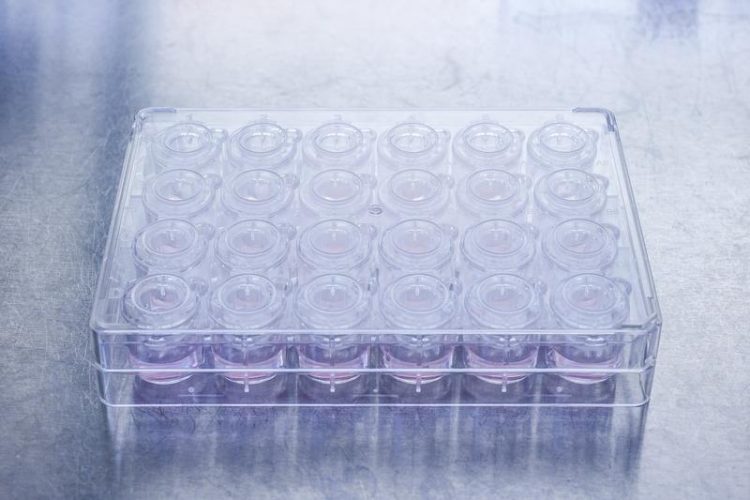If Machines Could Smell …

To determine the right odour receptor for a specific application,several thousand receptors and their combination must be screened. This is only economical when automated. Fraunhofer IPA
What, if robots could smell? Sniffing explosives at the airport, diagnosing diseases based on a patient’s breath, locating gas leaks and much more?
As part of its lighthouse topic “Biological Transformation“, the Fraunhofer Institute for Manufacturing Engineering and Automation IPA in Stuttgart is now increasingly connecting biological and technical systems. A new platform technology is developed to automatically manufacture cell-based sensors and make them economically usable.
For the economical use of biological sensors, Fraunhofer IPA is developing a technology that automatically produces cell-based biosensors. Such sensors could then give machines, for example, a sense of smell. The platform is initially validated on a product of the Californian start-up Koniku.
However, it will later also be used for other applications. IPA project manager Martin Thoma sums up the innovation: “We are basically developing a generic tool that will enable cell-based biological sensors for industrial use in the medium term.“
Biology and technology merge.The project is supported by the Baden-Württemberg Ministry of Economic Affairs, among others. With biointelligent products and the associated production technologies, new value creation potentials can emerge for the innovation area and industrial location of Baden-Württemberg.
The project aims to realize them for the country’s economy.In order to enable the targeted development of an economically usable product, Fraunhofer IPA will develop a screening process for receptor selection and reliable automated production of so-called transfected cells, i.e. cells in which foreign DNA or RNA is integrated.
The US-company Koniku has been cultivating such cells for several years now. Olfactory receptors are introduced on small autonomous optical selection units by Koniku.
The cells can be kept alive and are functional for an extended period of time to detect tiny particles from the environment. However, there are still many unanswered questions in this field of research. To determine the right olfactory receptor for a specific application, several thousand receptors and their combination must be screened.
For this process to become eco-nomical, a platform is needed that makes it possible to automatically modify cells, i.e. transfect them, and then examine them for their specific reaction to smells and tastes. With such a transfection and screening platform, it would be possible to modify the cells very quickly for different olfactory stimuli and thus to open up other areas of application, such as medical diagnostics.
“I am particularly excited about being able to deploy the Konikore in every home in a few years,“ says Osh Agabi. Founder and CEO of Koniku Inc. “A solution which can help people detect or screen disease at the earliest stages, naturally some hurdles remain to accomplish this goal nevertheless, step by step we are moving closer to this reality. The partnership with Fraunhofer IPA is another key milestone laid in this journey.“
Dipl.-Phys. Martin Thoma | Phone +49 711 970-1336 | martin.thoma@ipa.fraunhofer.de | Fraunhofer Institute for Manufacturing Engineering
and Automation IPA | www.ipa.fraunhofer.de
Press Communication
Dr. Birgit Spaeth | Phone +49 711 970-1810 | birgit.spaeth@ipa.fraunhofer.de | Fraunhofer Institute for Manufacturing Engineering and
Automation IPA | www.ipa.fraunhofer.de
https://www.ipa.fraunhofer.de/de/presse/presseinformationen/wenn-maschinen-riech…
Media Contact
All latest news from the category: Life Sciences and Chemistry
Articles and reports from the Life Sciences and chemistry area deal with applied and basic research into modern biology, chemistry and human medicine.
Valuable information can be found on a range of life sciences fields including bacteriology, biochemistry, bionics, bioinformatics, biophysics, biotechnology, genetics, geobotany, human biology, marine biology, microbiology, molecular biology, cellular biology, zoology, bioinorganic chemistry, microchemistry and environmental chemistry.
Newest articles

Superradiant atoms could push the boundaries of how precisely time can be measured
Superradiant atoms can help us measure time more precisely than ever. In a new study, researchers from the University of Copenhagen present a new method for measuring the time interval,…

Ion thermoelectric conversion devices for near room temperature
The electrode sheet of the thermoelectric device consists of ionic hydrogel, which is sandwiched between the electrodes to form, and the Prussian blue on the electrode undergoes a redox reaction…

Zap Energy achieves 37-million-degree temperatures in a compact device
New publication reports record electron temperatures for a small-scale, sheared-flow-stabilized Z-pinch fusion device. In the nine decades since humans first produced fusion reactions, only a few fusion technologies have demonstrated…





















